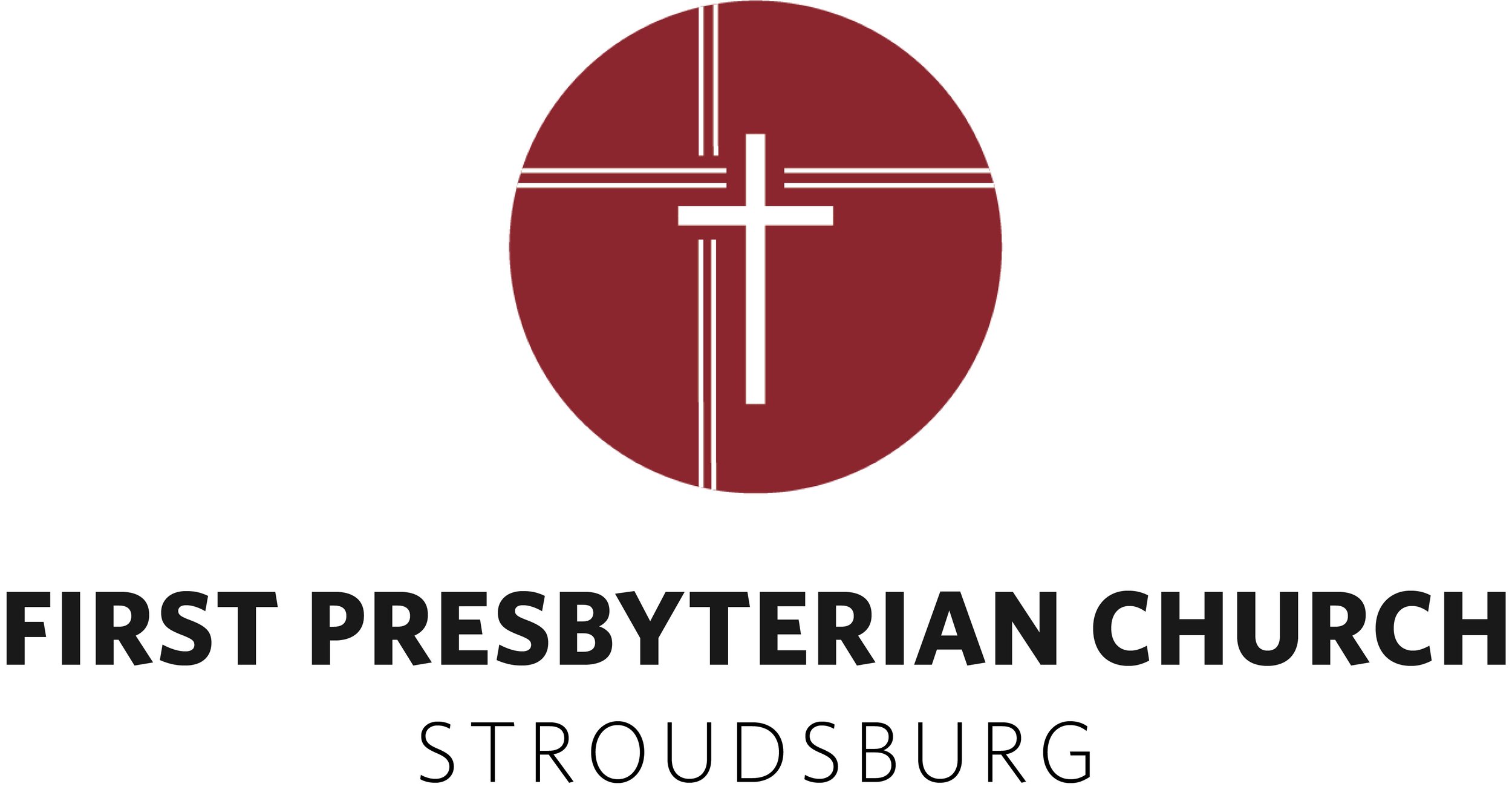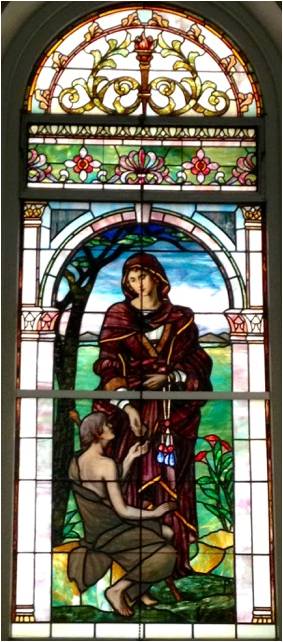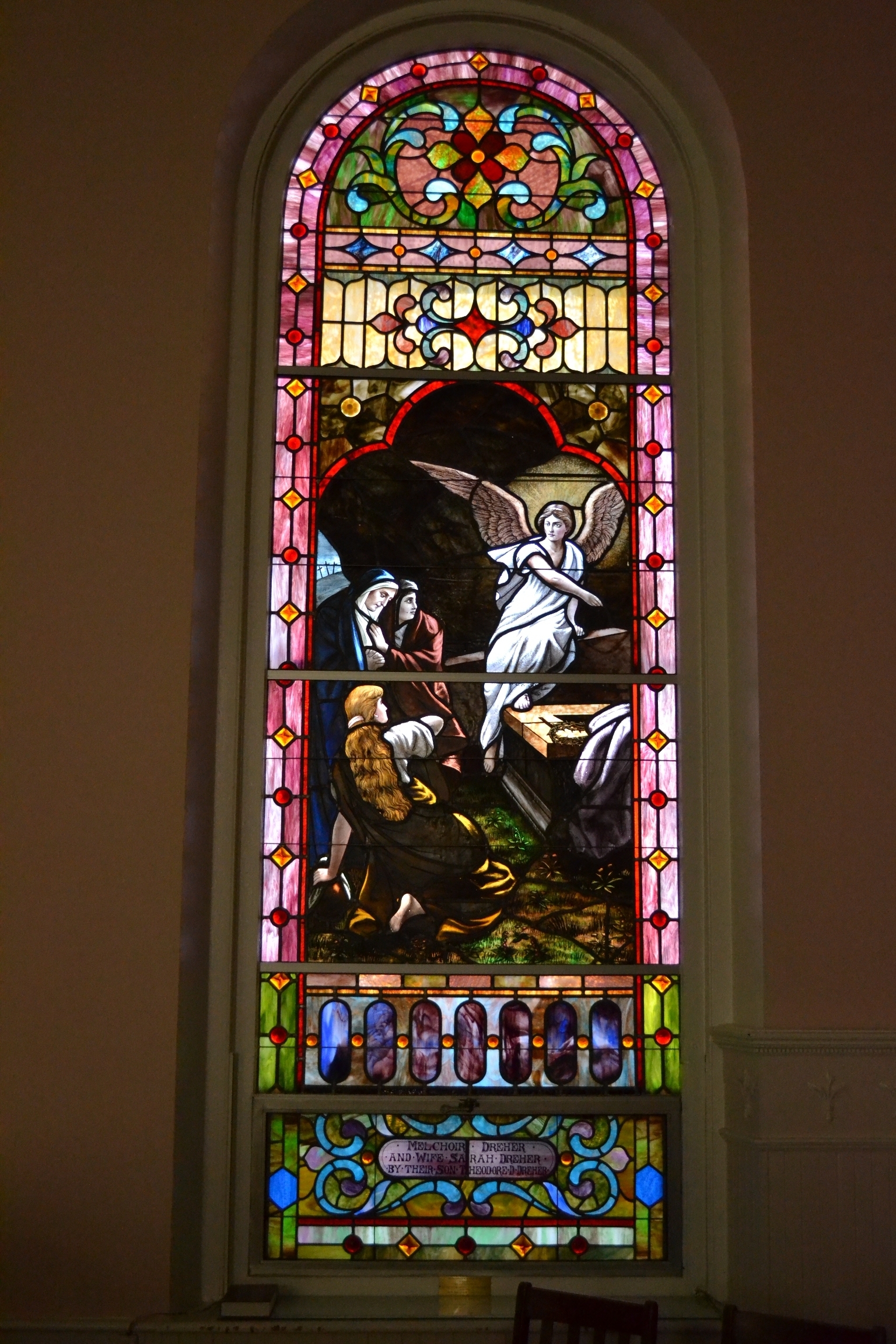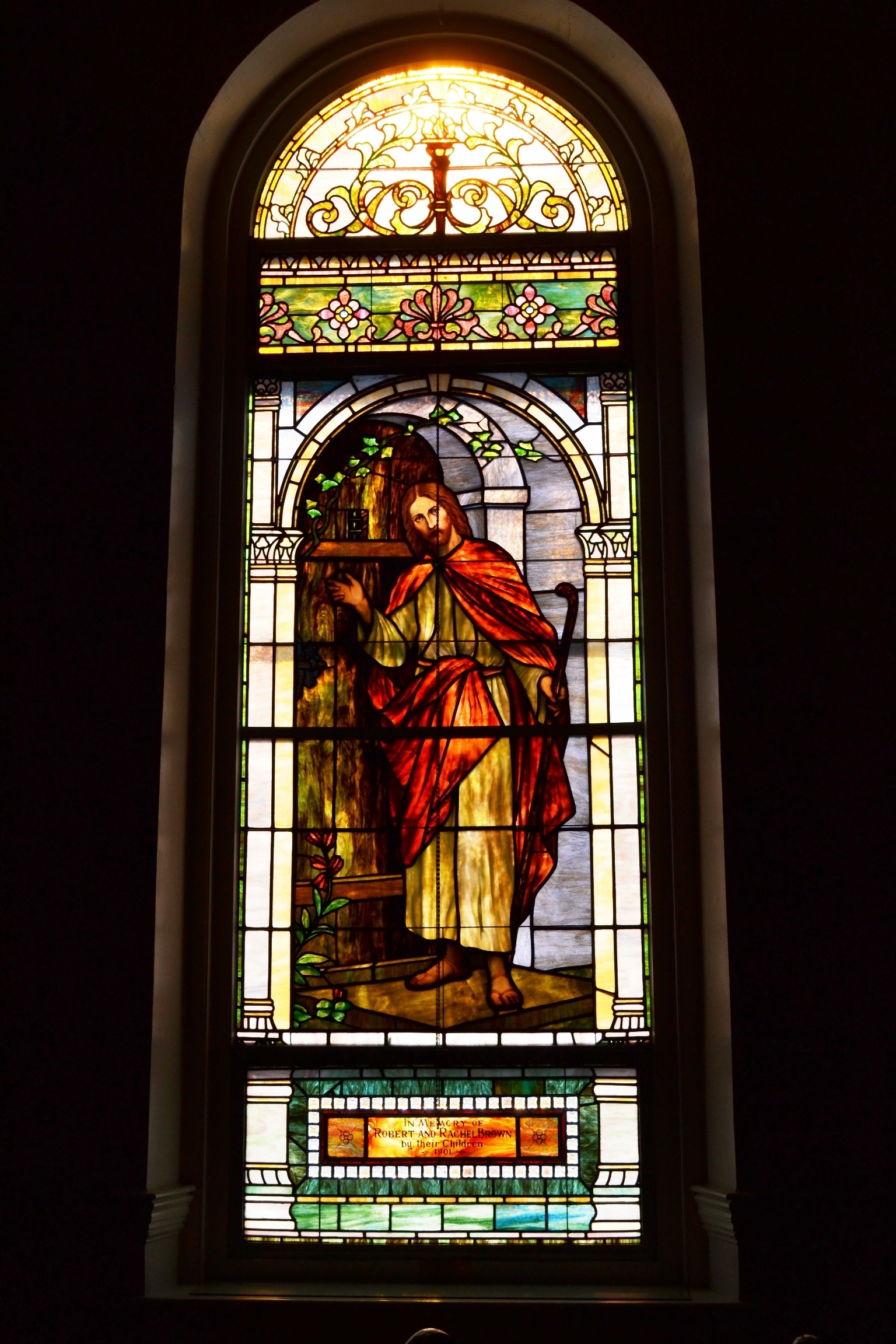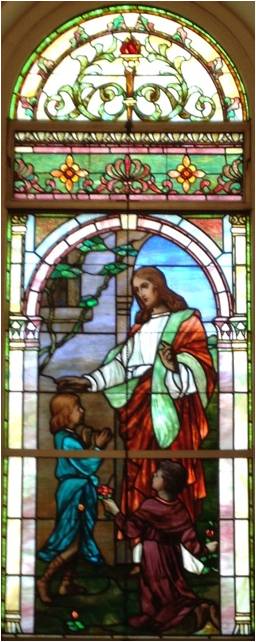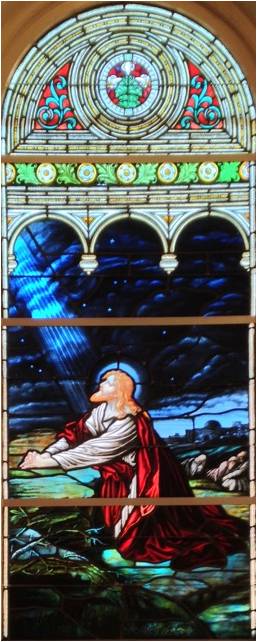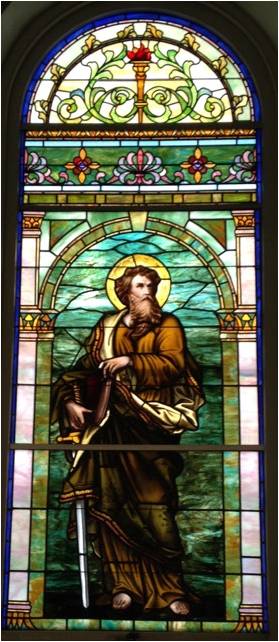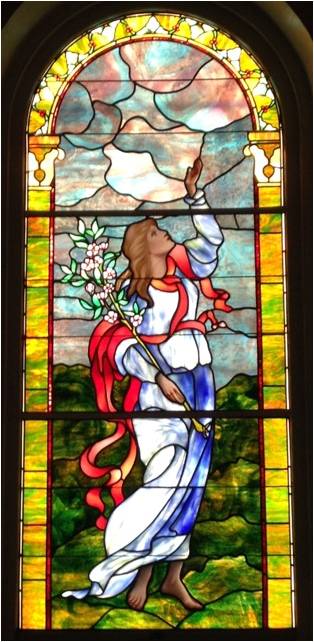Stained Glass Windows
Main Street windows
At the front of the church are three windows. The middle one is a relatively recent stained glass window. The interior light enhances the beauty of the colors at night and draws attention to the cross, which is its principal design element. This window was given by David Griffith, an elder of the church, in memory of his wife, Jean, in 1959.
The two windows on either side are the two oldest windows in the church. They are the original windows, installed when the church was built in 1868. All the sanctuary windows were like these until 1901, when the first stained glass windows were installed. Note that they are double-hung windows to provide for ventilation. The glass in these front windows is old English stenciled glass in a fleur de lis design. From the pavement they appear very plain-an opaque brownish red. But if one enters the building during the day and ascends the steps, one will find that the daylight shows to advantage the quaint regular pattern of the glass. It was discovered many years ago that replacing damaged panes in these two windows would be prohibitive because of the width of the glass and trying to match the color of the remaining panes.
Balcony windows
The two windows on either side of the balcony were executed by James Dougherty. The Board of Trustees contracted with him in 1901 for a cost of $50 each. In addition, A. Dreher was paid $4.00 for assisting in placing the windows, W. Wallace was paid $12.16 for lumber for the windows, W. Posten was paid $7.35 for painting the windows and brazing the pipes, and $1.25 was paid to someone for cleaning the church after the windows were placed. Monies taken in relating to the windows were $3.85 from the sale of the old sash weights and $5.50 for the sale of the old windows.
Although overshadowed by the picture windows and difficult to appreciate because the balcony obscures half of each window from the inside, these are very fine windows and deserve attention. Stained glass medallions in the middle of each window are beautifully executed and would be center pieces in many churches. From the balcony one can see half of the cross in one medallion and the Bible and lilies in the other.
Main Sanctuary windows
William Reith was a native of Germany who studied stained glass at the Offenbach Technical School in Baden-Baden. He emigrated to the United States in 1867. After working for several years for stained glass manufacturing firms in Philadelphia, Reith established his own firm on North Seventh Street in Stroudsburg in 1887. His business prospered to such an extent that he was able to move to Germantown, then a Philadelphia neighborhood of wealth and status. From there he serviced mostly New Jersey and eastern Pennsylvania, although he received commissions from throughout the country.
Six of the main sanctuary windows, and probably all eight, were executed by William Reith, who was in the words of an article in Waterbury American in 1901 "almost world-famous for his productions in both the ecclesiastical and domestic style of glass art work." "The Empty Tomb" is signed "Wm. Reith, Phila., Pa." Described below are the east side windows, front to back, followed by the west side windows, front to back.
